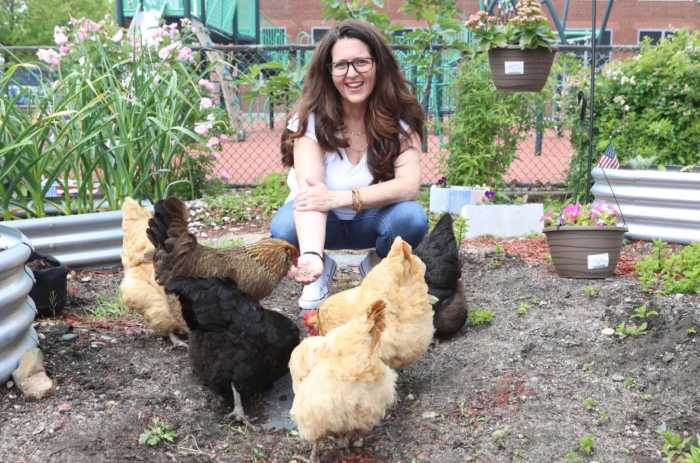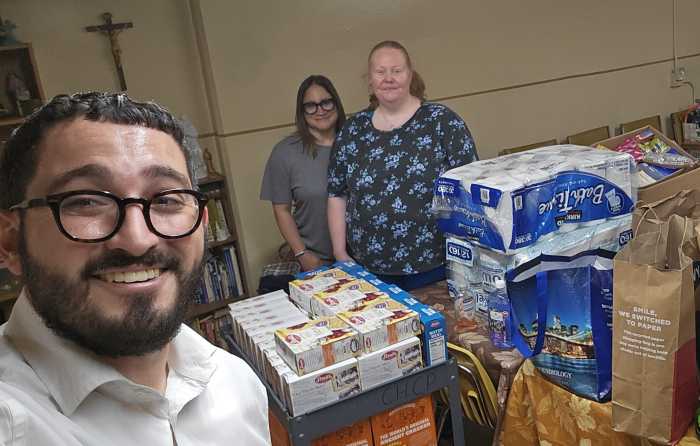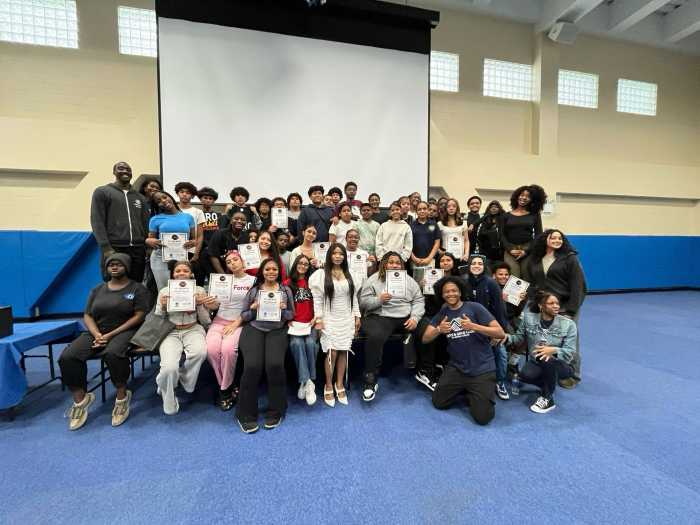BY GRANT LANCASTER
New York’s largest soup kitchen is adapting to feed more New Yorkers with the help of fewer volunteers, relying largely on donations of food and cash from the public and corporate partners.
The Holy Apostles Soup Kitchen in Chelsea, which has served meals for New Yorkers in need through 9/11, the 2008 Recession and Hurricane Sandy, is facing new challenges during the COVID-19 viral outbreak such as a lack of volunteers. However, skilled volunteers from shuttered New York restaurants, community members and generous businesses are helping fill the gaps, Holy Souls officials said.
The soup kitchen has had to send most of its volunteers home for safety and rapidly transition their indoor cafeteria-style meals to a grab-and-go and delivery service, said Nichole Guerra, the soup kitchen’s director of development and communications.
Under the new system, designed to keep people fed while avoiding crowds and infection, the soup kitchen is serving about 800 meals a day, but Chief Operating Officer Michael Ottley expects the number to rise to at least 1,000, he said. The soup kitchen provided as many as 1,600 meals a day during the recession in 2008-09, he said.
Guerra expects more and more people to use the meals the soup kitchen provides as the state-mandated stay-at-home order drags on, she said.
“We’re thinking that a lot of people who never thought they would have to rely on a soup kitchen for a meal are going to start coming,” Guerra said.
To meet these growing needs with fewer volunteers, professional chefs like Ginger Pierce and her husband Preston Madson stepped in. Pierce is the executive chef at Jams Restaurant and Madson is the executive chef at Il Buco Alimentari. With their restaurants closed or operating at limited capacity, some food service workers have volunteered to help the soup kitchen, Pierce said.
Pierce had worked with the kitchen’s programs before but is now helping out there three days a week, cooking and trying to work with other restaurants and vendors that could help the kitchen. For Pierce and her husband, it was about finding a way to “do good in this terrible situation,” she said.
In addition to private chefs, food companies such as Verlasso Salmon are pitching in, with the sustainable fish company contributing 5,000 pounds of salmon and $5,000, said Victoria Parr, Verlasso’s director of marketing.
Verlasso officials wanted to provide healthy food for those turning to soup kitchens during the uncertain times of the viral outbreak, said marketing manager Kathy Liz. This is the first time Verlasso has directly donated food to a soup kitchen, she said.
The fish is prepped to ship and will be on its way as soon as the soup kitchen ensures it has a proper place to store all of it, Parr said.
In addition to food donations, the soup kitchen started an online fundraiser to buy food and supplies like biodegradable containers that guests can use to take food with them, which was something they never purchased in bulk before, Guerra said. The soup kitchen is prepared to operate under these new standards for at least four months, so financial support is essential, Guerra said.
Those interested in donating can also text FEEDNYC to 44321.
One of the challenging aspects of keeping the soup kitchen running is not knowing how long the outbreak will last, Ottley said. Even during Hurricane Sandy, when the soup kitchen lost power and had to turn to sandwiches and other cold meals for their guests or use kitchens offered by community members, the power was back on within a week, he said.
Ottley is most concerned about the immigrant populations who use the soup kitchen and are starting to use it in greater numbers as unemployment grows, he said. Many of these people have been fired from service jobs but do not qualify for SNAP or federal stimulus package aid because of their citizenship status, something that many New Yorkers can draw on.
Despite the struggle to serve community members in increased need, Sara Pandolfi, who works with Holy Souls as a nonprofit development and strategy consultant, is optimistic about the community support offered, she said. The fundraiser, launched March 25, has already raised about $44,000 of its $1 million goal.
“We’re fortunate that we have people who are so compassionate,” Pandolfi said.
This story originally appeared on amny.com.



































